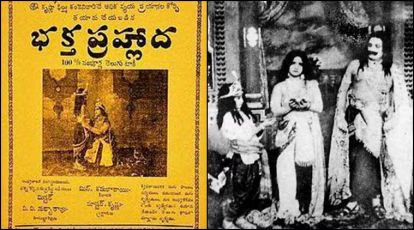Bhakta Prahlada: Celebrating 93 Years of Telugu Cinema’s First Talkie Film

As Telugu cinema stands tall today with global recognition, it all began with a pioneering milestone—Bhakta Prahlada (1932). The first-ever Telugu talkie, this legendary film marked the dawn of a new cinematic era, bringing sound and storytelling together for the first time in Tollywood’s history.
The Birth of Telugu Talkies
Directed by H. M. Reddy and produced by Ardeshir Irani of Imperial Film Company, Bhakta Prahlada was released on February 6, 1932. Irani, who had already revolutionized Indian cinema with Alam Ara (1931), set his sights on South India, leading to the creation of this mythological masterpiece.
Starring Sindhoori Krishna Rao as Prahlada, along with Munipalle Subbayya, Surabhi Kamalabai, Doraswamy Naidu, and a young L. V. Prasad, the film was based on the popular stage play of the same name. Though no complete synopsis of the movie exists today, its legacy continues to thrive through historical accounts, reviews, and a few surviving stills.
Impact and Reception
Upon release, Bhakta Prahlada was met with excitement from audiences, who marvelled at the experience of sound in Telugu cinema. However, critics noted its resemblance to stage drama, limitations in sound recording, and quality constraints. Despite these challenges, its significance as a trailblazer in South Indian cinema remains undeniable.
Unfortunately, the film is now classified as lost, with no complete prints available. Yet, its influence paved the way for generations of filmmakers, laying the foundation for the grand industry that Tollywood has become today.
A Legacy That Lives On
Even after 93 years, Bhakta Prahlada continues to be a symbol of Telugu cinema’s rich heritage and innovation. It serves as a reminder of the visionary efforts that shaped the industry and the journey from the first talkie to today’s technological marvels.
As we celebrate this historic milestone, let us honour the pioneers who gave Telugu cinema its voice. Here’s to preserving and cherishing our cinematic roots!


